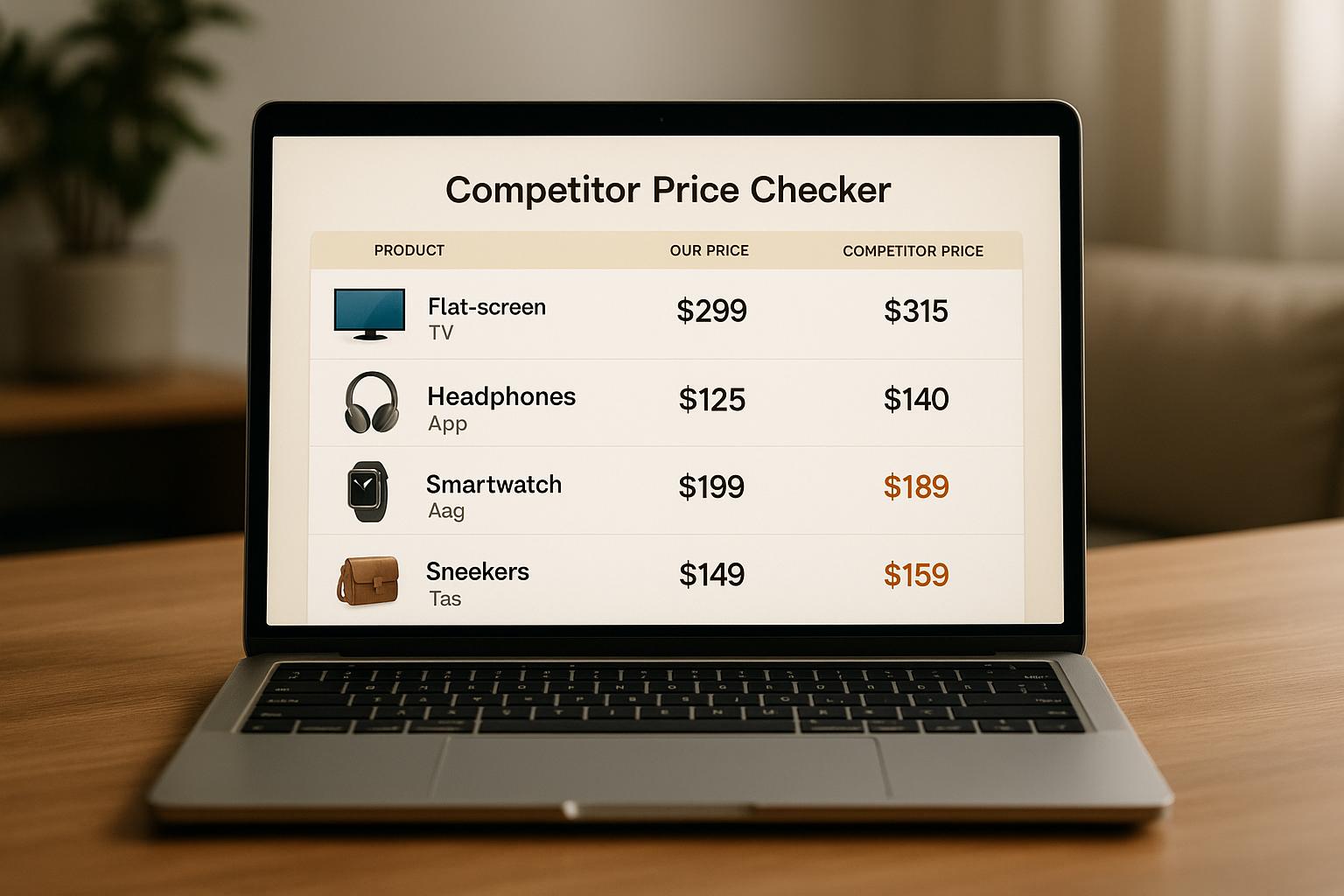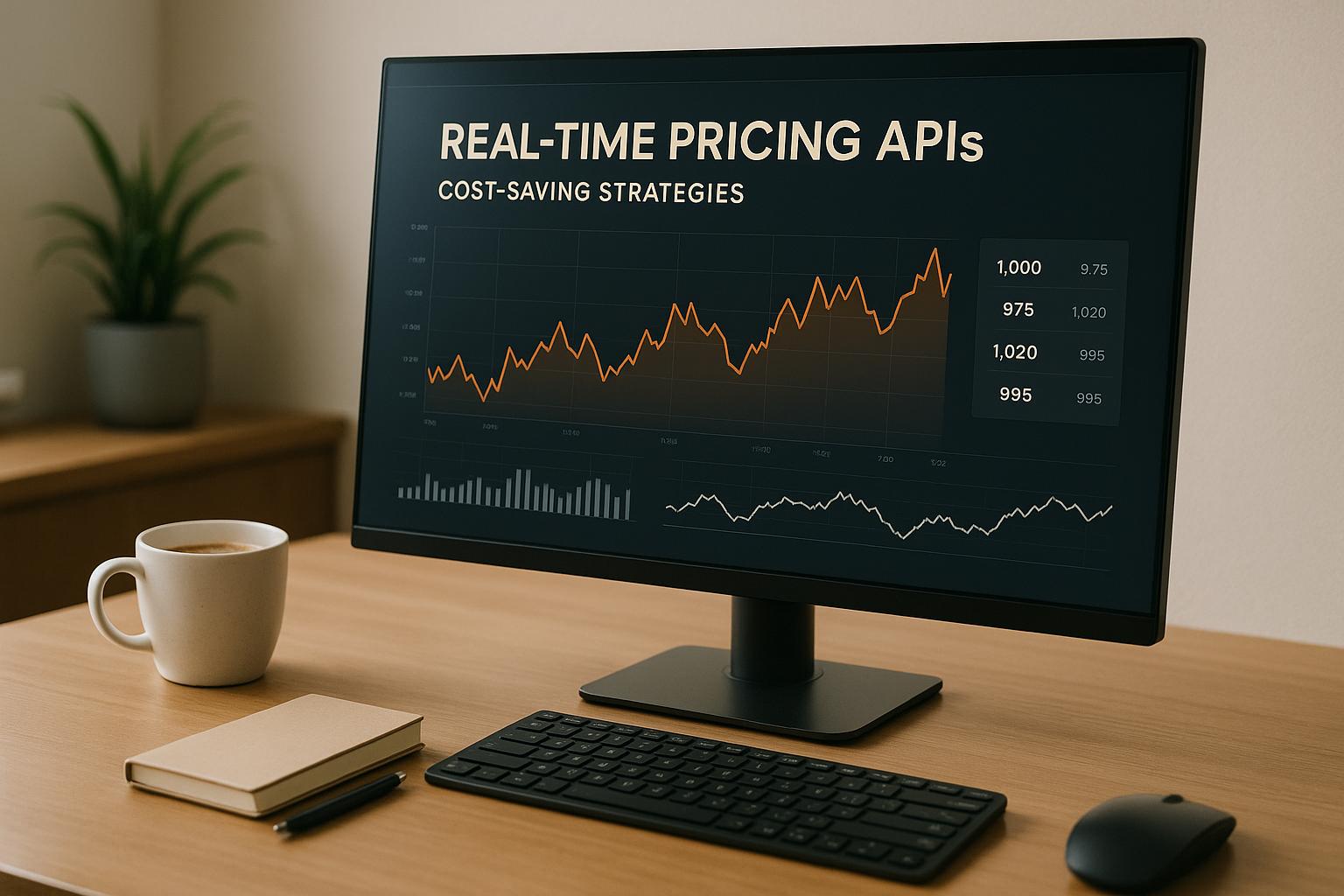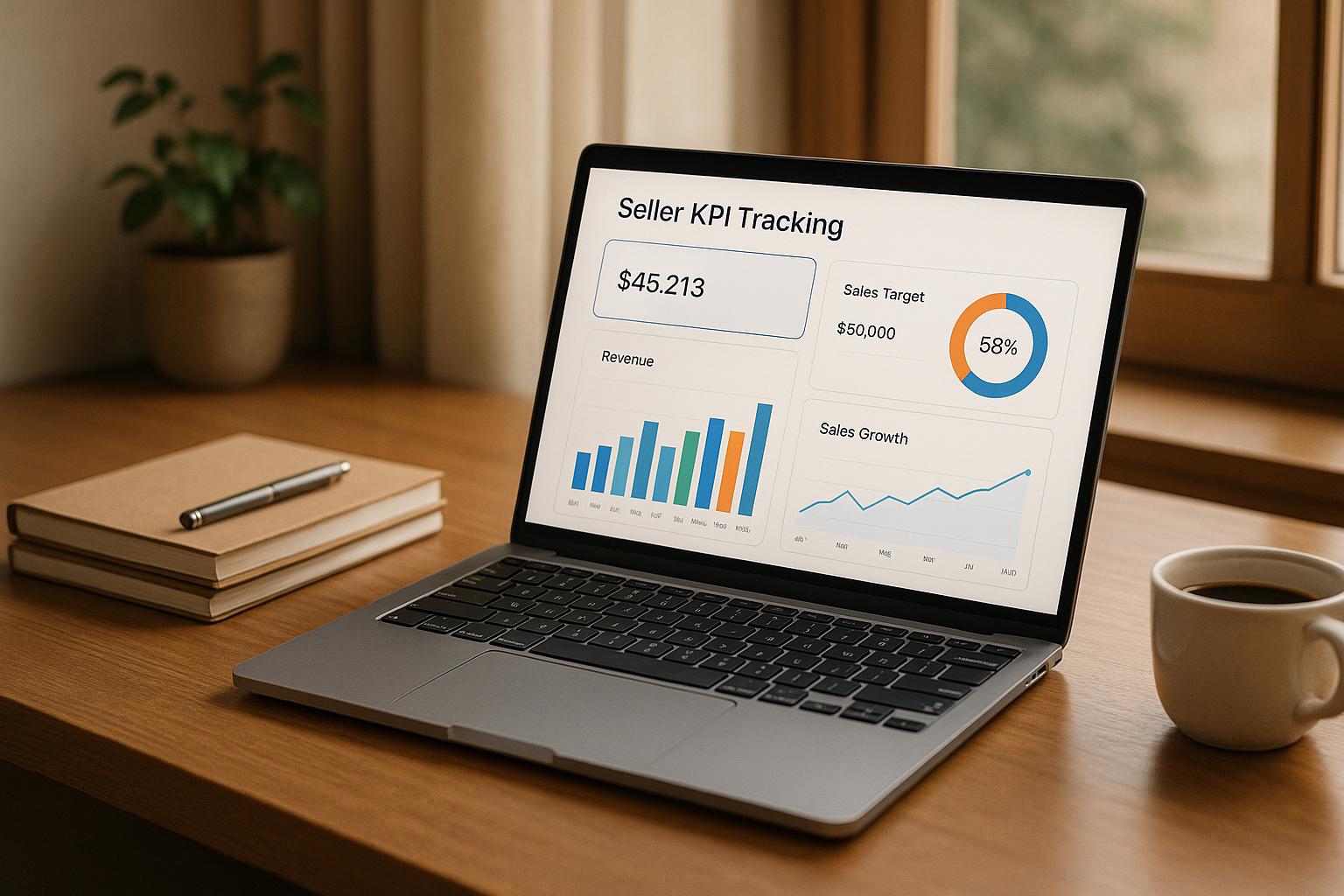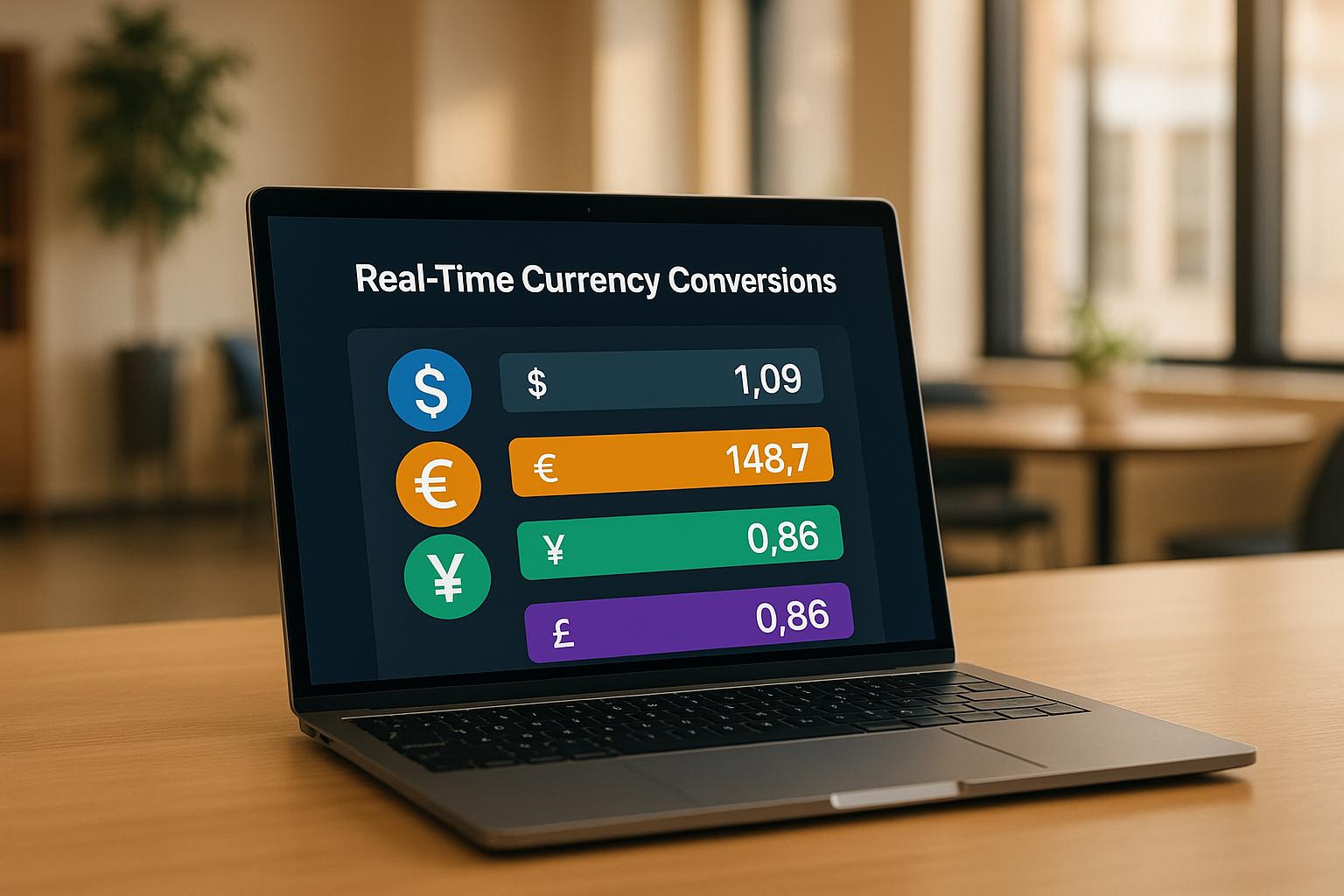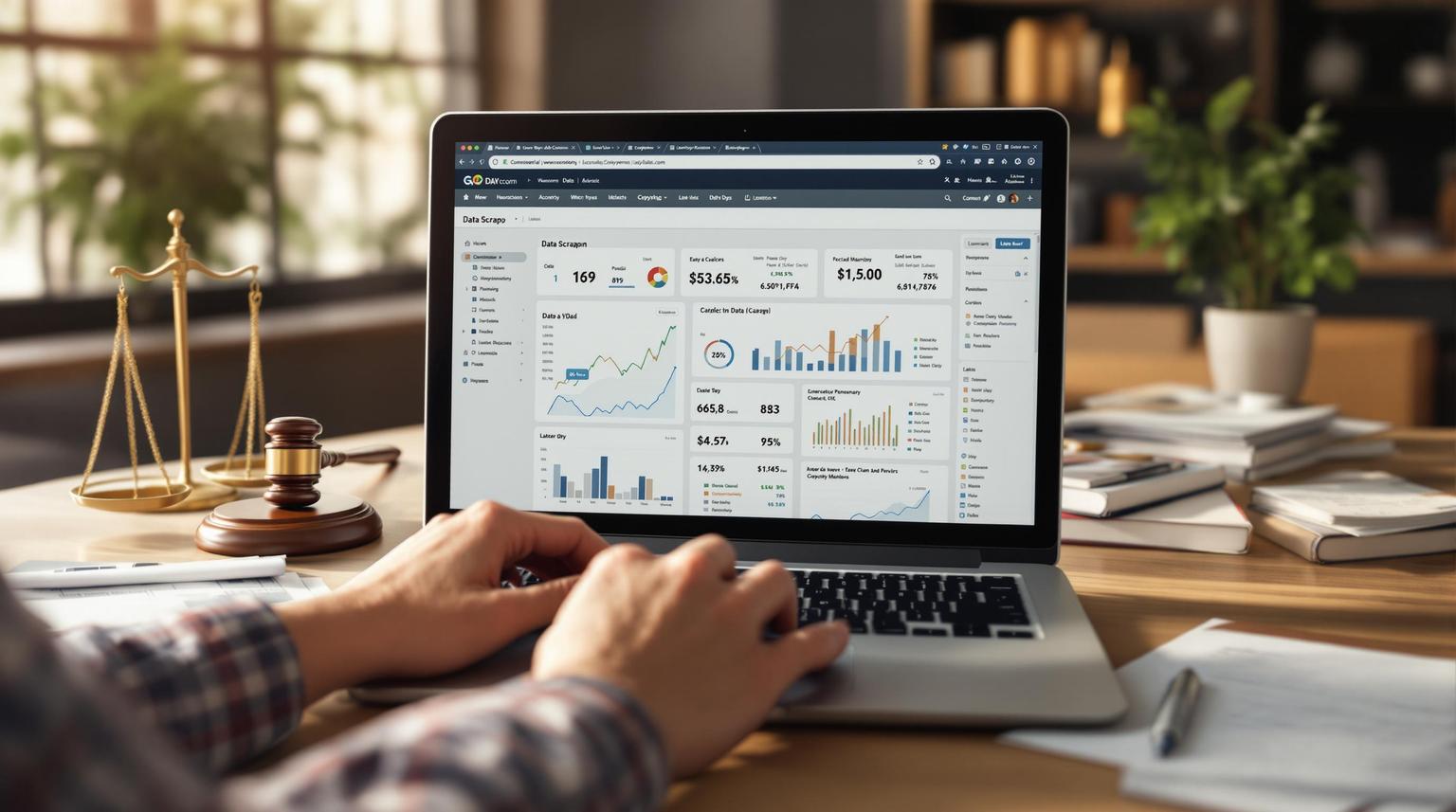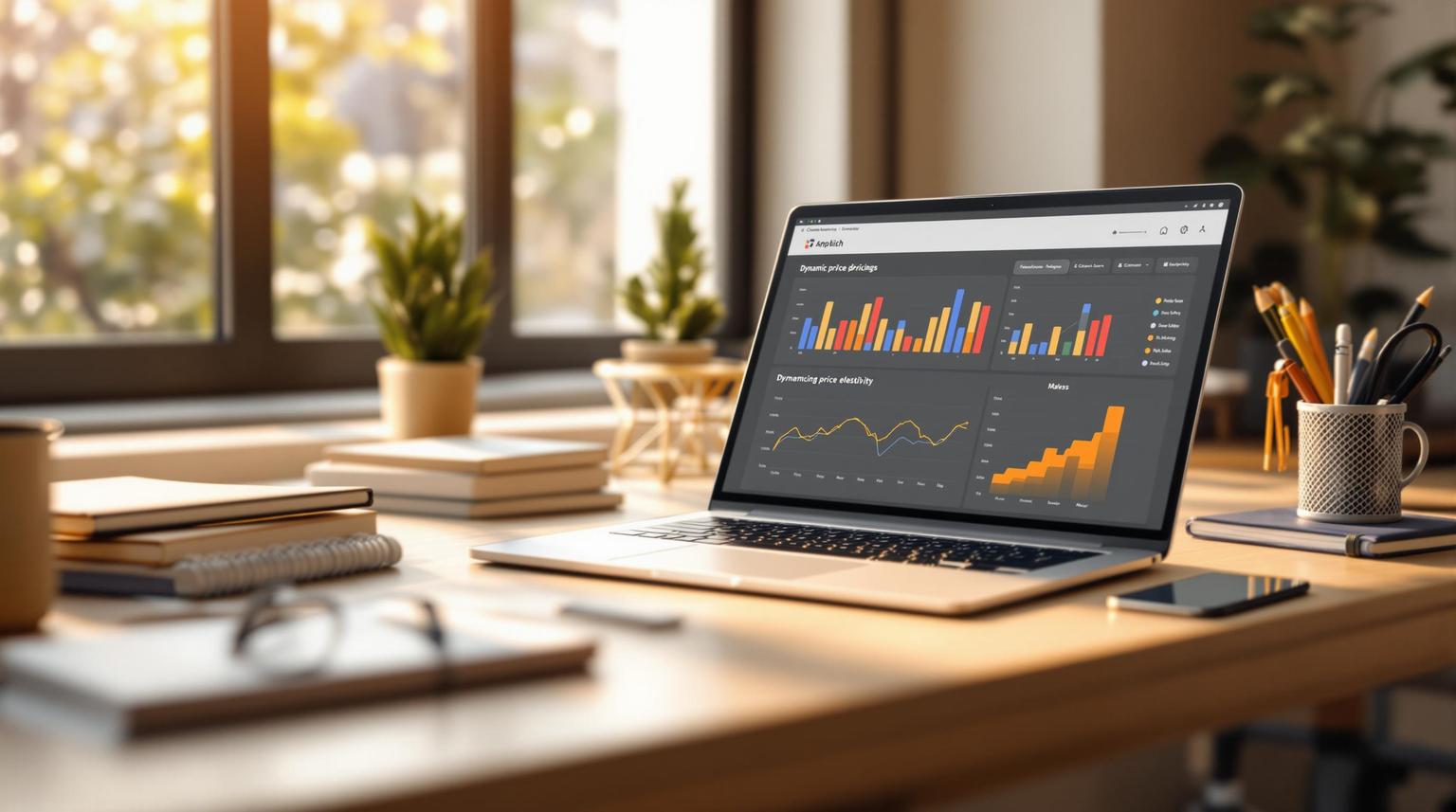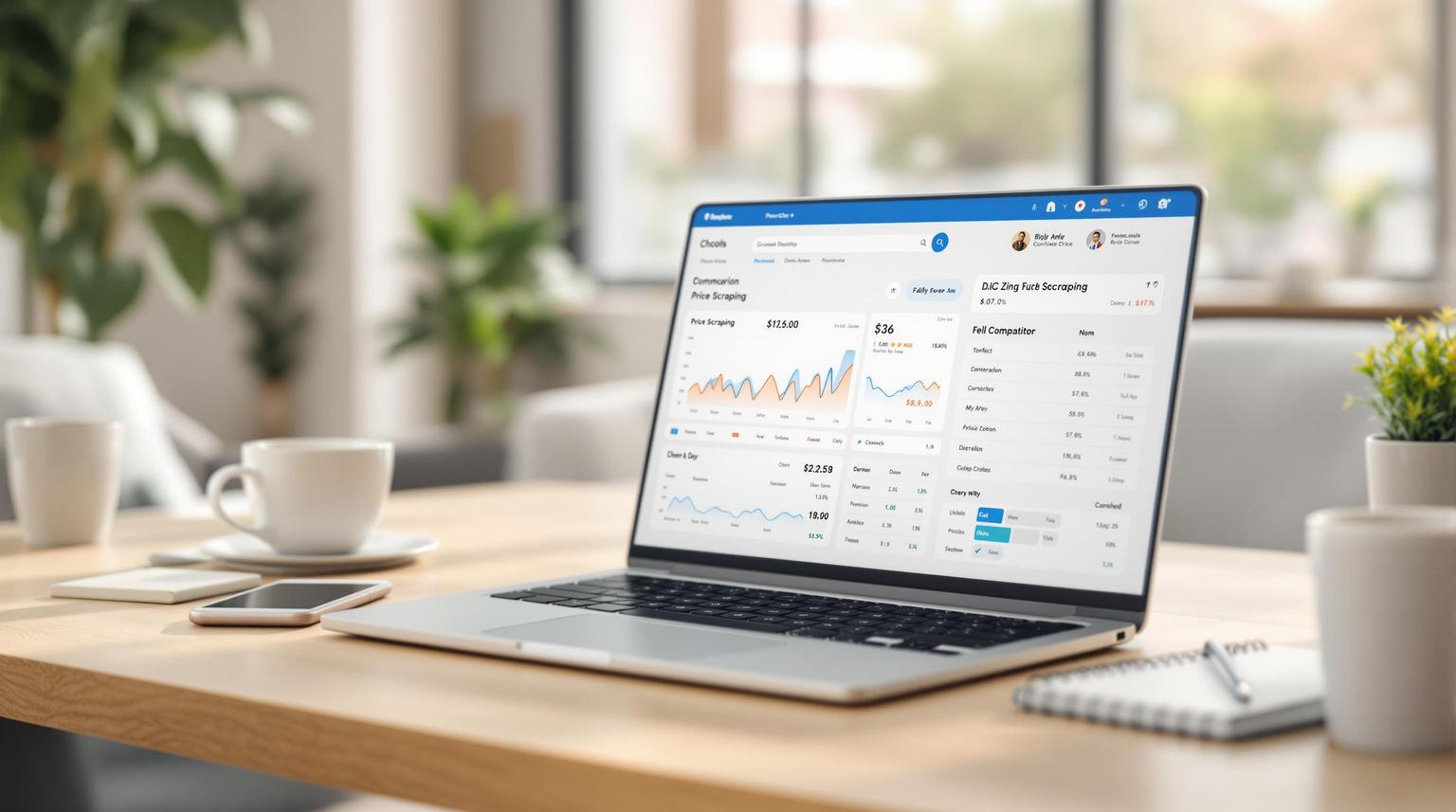Real-Time Data Sync for Competitive Price Monitoring

July 14, 2025
Real-time data synchronization is transforming how e-commerce businesses monitor prices and stay competitive. By instantly updating pricing and inventory data, companies can respond to market changes, avoid errors, and improve customer trust. Here’s why it matters:
- Stay Competitive: Prices on platforms like Amazon can change multiple times daily. Real-time updates help businesses keep up and remain attractive to price-conscious shoppers.
- Increase Profits: A 1% price adjustment can boost profits by up to 9%. Tools like ShoppingScraper enable data-driven decisions to optimize pricing strategies.
- Avoid Costly Errors: Pricing mismatches can lead to lost revenue and penalties, with businesses losing an average of $12.9M annually due to poor data quality.
- Streamline Operations: Automation reduces manual work, saving time and improving accuracy across systems like inventory and pricing engines.
ShoppingScraper simplifies this process with fast API integrations, real-time data scraping, and automated scheduling. Businesses can monitor competitors, align prices across channels, and improve customer experiences with consistent, accurate data. Whether you’re tracking global marketplaces or managing complex catalogs, real-time data sync is a game-changer for e-commerce.
Benefits of Real-Time Data Sync for E-commerce Pricing
Real-time data synchronization is changing the game for e-commerce pricing strategies. It’s not just about keeping prices updated - it’s about improving operations, boosting customer satisfaction, and driving profitability.
Accurate and Timely Pricing Updates
With real-time sync, pricing becomes more precise and responsive. Businesses can instantly adjust to competitor price changes, promotions, and seasonal trends without the guesswork.
"Real-time updates ensure accuracy and competitiveness, supporting businesses to optimize revenue, maintain market position, and maximize profitability." – Anna Khimonenko, Product Owner of PIM at Iceshop
Pricing errors can be costly - businesses lose an average of $12.9 million annually due to poor data quality. Over half of Google account suspensions and product disapproval warnings are tied to price or availability mismatches. Real-time synchronization allows businesses to quickly adapt to market shifts, competitor moves, or promotional opportunities across all sales channels.
To make the most of this, businesses can implement reporting tools to monitor price updates and establish clear pricing standards. Product Information Management (PIM) systems also simplify this process by automatically syncing prices across channels, cutting down on errors and saving valuable time.
Accurate pricing doesn’t just impact revenue - it also plays a key role in inventory management, which we’ll dive into next.
Better Inventory Management
Real-time inventory tracking ensures that pricing aligns with stock availability. It keeps tabs on purchases, deliveries, transfers, and returns, helping businesses avoid costly missteps. And the stakes are high: U.S. businesses saw logistics costs rise by 19.6% in 2022, with over half of those costs tied to inventory carrying expenses. Add to that the 6–10% revenue loss many companies faced due to supply chain disruptions, and the importance of accurate inventory data becomes clear.
By eliminating manual data entry and reducing the need for frequent physical inventory counts, businesses can save over 10 hours each month. This frees up teams to focus on strategic decisions. Real-world examples highlight these benefits. For instance, in January 2025, French footwear brand Odaje integrated its inventory systems, improving conversion rates by 6% and boosting international sales by 25%. Similarly, Australian brand Bared Footwear solved issues between its online and POS systems, while Danish tea retailer TeSelskabet coordinated product catalogs across channels, leading to a 25% increase in sales.
Real-time inventory data also offers valuable insights into demand trends, SKU performance, and channel-specific sales. This helps businesses respond quickly to shifts in demand, restock efficiently, and prepare for unexpected challenges.
Improved Customer Experience
Consistent and accurate pricing across all platforms - whether it’s a website, mobile app, or in-store display - is key to building customer trust. When customers see the same price everywhere, it reduces confusion and creates a smoother shopping experience. In an era where price comparison tools are widely used, staying competitive is crucial for retaining customer loyalty.
Take Best Buy, for example. The company uses real-time pricing data to support its price-match guarantee, ensuring it remains competitive in a market where consumers frequently compare prices. Consistency in pricing not only builds trust but also prevents the frustration caused by sudden, drastic price changes. Instead, gradual, data-driven adjustments can attract customers with compelling offers while maintaining their loyalty.
When customers trust your pricing and find it competitive, they’re less likely to hesitate or second-guess their purchase decisions. The result? Faster transactions, higher conversion rates, and increased customer lifetime value. Accurate pricing doesn’t just benefit the bottom line - it enhances the overall shopping experience.
Technologies and Methods for Real-Time Data Sync
Real-time data synchronization relies on a sophisticated combination of technologies, ensuring scalable and efficient competitive price monitoring. Let’s dive into the key methods that make this possible.
API-Based Integrations
APIs are the cornerstone of modern real-time data syncing, bridging different systems and enabling seamless, real-time operations. Depending on the use case, developers might use REST APIs for simplicity, GraphQL for precise data fetching, or event-driven APIs for instant updates.
This approach offers several advantages, including low latency, easier debugging, and the ability to scale efficiently. However, maintaining high data quality is critical - this involves processes like data cleansing, matching, and leveraging AI to detect anomalies. To ensure security, APIs should incorporate features like role-based access, encryption, and rate limiting, as weak points can lead to significant breaches.
Event-Driven Synchronization
Event-driven synchronization is a game-changer for real-time updates. Instead of relying on constant polling, systems are updated instantly when specific events occur, such as competitor price changes. This is achieved through tools like webhooks and WebSockets.
One standout technique here is Change Data Capture (CDC), which focuses on identifying and syncing only the data that has changed, rather than transferring entire datasets. This method significantly reduces bandwidth usage and processing demands while ensuring real-time accuracy.
Automated Scheduling and Data Export
When continuous updates aren’t practical, automated scheduling steps in to maintain a steady data flow. Scheduled or event-triggered exports in formats like JSON or CSV can feed analytics platforms and dashboards with the necessary information. Middleware and message queues, such as RabbitMQ or Apache Kafka, play a vital role in managing data surges and ensuring system resilience. Additionally, real-time data replication allows for smooth access across geographically distributed locations.
"Real-time data synchronization is a foundational element for any serious eCommerce operation, particularly when revenue stakes are high." – Snowdog
These technologies collectively power real-time price monitoring tools like ShoppingScraper, delivering actionable insights for competitive pricing strategies.
sbb-itb-65e392b
Real-Time Price Monitoring with ShoppingScraper

ShoppingScraper simplifies competitive price tracking with a robust set of tools tailored for e-commerce businesses and today’s fast-paced marketplaces.
Core Features of ShoppingScraper
At its core, ShoppingScraper focuses on three key functionalities that make real-time price monitoring seamless and effective. First, it delivers real-time data scraping, with API response times typically clocking in at under 4 seconds. Second, its advanced EAN/GTIN matching ensures accurate product identification by cross-checking titles and URLs when businesses upload product lists with EAN codes. Finally, its powerful API integration is designed for efficiency, offering a RESTful API that operates 25% faster while maintaining 99% uptime. The Scheduler endpoint further enhances usability, allowing businesses to automate data collection on an hourly, daily, or weekly basis. Together, these features provide a solid foundation for quick and reliable price monitoring.
How ShoppingScraper Simplifies Price Monitoring
ShoppingScraper takes the complexity out of competitive price monitoring, offering flexible integration options to meet diverse business needs. Whether through a web interface, spreadsheets, or API, users can easily access and utilize the platform. It also integrates seamlessly with leading e-commerce platforms such as Google Shopping, Amazon, bol.com, and Coolblue.
"The data comes from Google Shopping, where we collect pricing data on an EAN-level. This means we capture every variant, color, and size - updated throughout the day."
- Job van der Geest, Marketing Intelligence, VML Netherlands
Additionally, the platform ensures that collected data can be effortlessly exported, making it compatible with existing analytics and business intelligence tools. This streamlined approach allows businesses to make timely, data-backed pricing decisions without unnecessary technical hurdles.
ShoppingScraper Use Cases in E-commerce
Thanks to its robust features and easy integration, ShoppingScraper supports a variety of e-commerce strategies. Its real-world applications highlight its value in different business scenarios. For instance, marketing agencies use the platform to gather large volumes of relevant data, enabling better decisions in advertising, pricing, and inventory management.
"ShoppingScraper has been a key asset for our agency. With the support of ShoppingScraper we are able to collect massive quantities of relevant data, which feeds our systems, and provides our specialists with data-driven insights that help them make better decisions about advertising, optimization, pricing and inventory management, leading to increased sales and profits."
- Toon Hendrikx, Founder & CEO, 10XCREW
Distribution companies also benefit greatly. For example, in January 2025, Badkamerwinkel.nl uploaded its product list with EAN codes into ShoppingScraper, which automatically scraped all related product data, simplifying their price monitoring process.
"ShoppingScraper has become an integral part of our distribution strategy. The product and pricing data it provides allows us to make smart decisions about our inventory and pricing."
- Arjan Pelle, Manager Business Intelligence @ Nedis
Its ability to track every product variation in real time makes it particularly valuable for businesses managing complex catalogs. This precision supports advanced pricing strategies that are essential in today’s competitive e-commerce environment.
"ShoppingScraper supports us in making better decisions for our clients. The data accuracy in combination with the fast way to extract it to our own platforms makes ShoppingScraper a valuable partner."
- Koen van den Eeden, OMG Transact Managing Director
For those interested in testing the platform, ShoppingScraper offers a 14-day free trial with 100 credits - no credit card required. This trial lets businesses evaluate how well the tool aligns with their price monitoring needs before committing to a subscription.
Conclusion and Key Takeaways
Real-time data synchronization has become a must-have for effective competitive price monitoring in e-commerce. Being able to access accurate, up-to-the-second pricing information can help businesses seize opportunities and stay ahead of competitors.
Why Real-Time Data Sync Matters
The benefits of real-time data synchronization go far beyond just tracking prices. For instance, ShoppingScraper delivers API responses in under 4 seconds with a 99% uptime rate. This kind of speed ensures that pricing decisions are based on current market trends rather than outdated data.
Automation is another game-changer. By eliminating the need for manual price checks, businesses can save hundreds of hours. This allows teams to focus more on strategic planning and less on tedious data collection. Additionally, competitive pricing strategies built on accurate data can boost customer trust, leading to better conversion rates and stronger customer loyalty.
The impact is clear: ShoppingScraper has earned an impressive 4.8/5 overall user rating, with 82% of users giving it 5 stars. Its value-for-money rating of 4.6/5 highlights the tangible benefits businesses see when investing in real-time price monitoring technology.
How to Get Started with ShoppingScraper
The advantages of real-time monitoring make it a necessity for modern e-commerce businesses. ShoppingScraper supports major marketplaces like Google Shopping (in over 40 countries), Amazon, bol.com, and Coolblue.
Getting started is simple. You can access ShoppingScraper via its web app, integrate it with Google Sheets in just a few minutes, or set up an API in 1–2 days. Plans start at $49.00 per month, making it an accessible option for businesses of all sizes.
Whether you're a marketing agency gathering data for campaigns, a distributor managing large product catalogs, or an e-commerce brand fine-tuning pricing strategies, ShoppingScraper offers the speed, accuracy, and ease of use you need. Try it out with a free 14-day trial to see how well it fits your pricing needs.
FAQs
How does real-time data synchronization help e-commerce businesses stay competitive with pricing?
Real-time data synchronization plays a key role in helping e-commerce businesses stay ahead in a competitive market. It ensures that critical details like pricing, product availability, and promotions are always current, allowing businesses to adapt quickly to shifts in the market, competitor pricing strategies, and changing customer demands.
Automating data updates eliminates the risk of manual errors, streamlines operations, and enables businesses to implement dynamic pricing strategies that reflect market trends in real-time. This approach not only improves the shopping experience for customers but also drives sales and profitability by supporting smarter, data-informed decision-making.
What technologies power real-time data synchronization, and how do they improve price monitoring?
Real-time data synchronization depends on event-driven technologies like webhooks and message queues. These tools enable instant updates and smooth communication between systems. They help cut down delays, remove the need for manual updates, and maintain consistent data across platforms. This is especially crucial for businesses needing to respond quickly to competitor price changes.
On top of that, scalable methods such as data replication and synchronization tools are designed to manage large amounts of information efficiently. They ensure accurate, uninterrupted price tracking without sacrificing system performance. By using these technologies, e-commerce businesses can remain competitive and confidently make informed decisions based on up-to-date data.
How can businesses use real-time data sync to improve inventory management and enhance the customer experience?
Businesses can take advantage of real-time data synchronization by integrating their sales channels, inventory systems, and customer databases into a unified platform that updates instantly. This approach allows for precise stock tracking, helping to avoid issues like overstocking or running out of inventory. At the same time, it ensures customers always see accurate product availability, creating a smoother shopping experience.
Automating data updates also simplifies order processing, improves inventory management, and boosts overall efficiency. These improvements minimize errors, speed up fulfillment, and enhance customer satisfaction, making real-time synchronization an essential element for thriving in e-commerce.
Related posts












